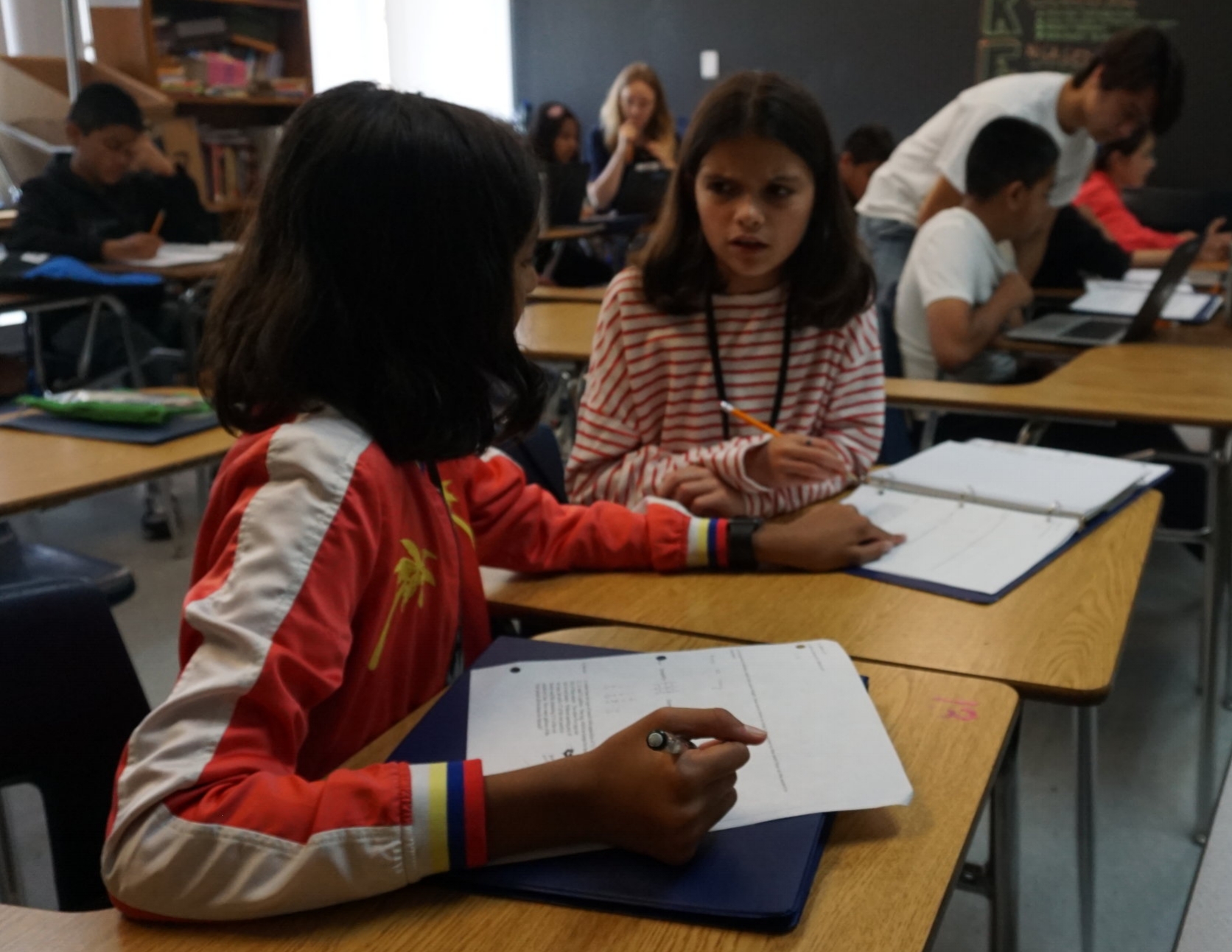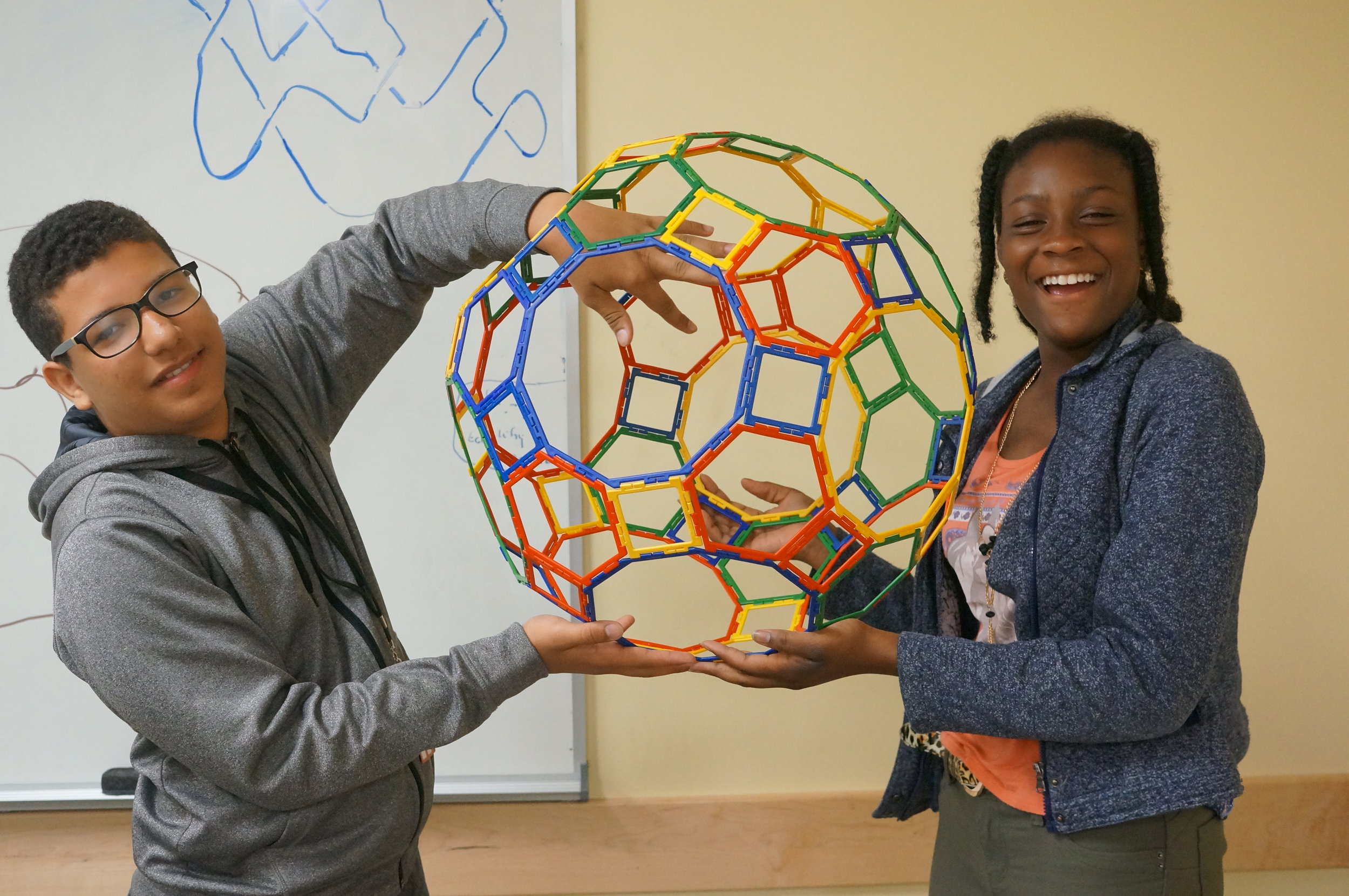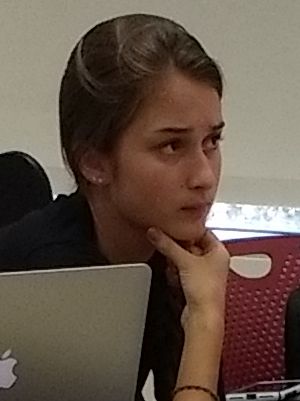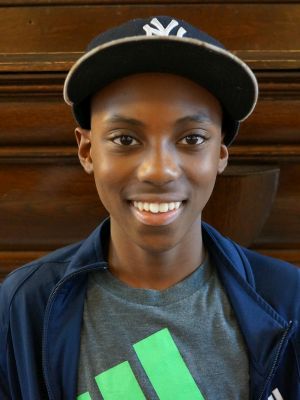What does it take to fall in love with what you do?
BEAM's Fall Newsletter has arrived!
Today, BEAM's quarterly newsletter arrived in the inboxes of all our subscribers. The newsletter features:
An introduction to BEAM Summer Away at Harvey Mudd College, our sixth summer site
An invitation to BEAM’s Puzzles and Trivia Night
A recap of College Prep Week
Staff Picks: recommendations from staff members about what to read, watch, listen to, and more
Recent accomplishments of BEAM students
Slightly mathy trivia from last year’s Puzzles and Trivia Night for you to try out!
Missed it? You can read the newsletter now.
Make sure you don’t miss the next one! Sign up for our quarterly newsletter.
BEAM's Pre-Summer Newsletter has arrived!
Today, BEAM's quarterly newsletter arrived in the inboxes of all our subscribers. The newsletter featured:
Information on our largest summer of operations yet
A recap of College Decision Day
Highlights from BEAM’s recent Career Day
“What We’re Reading”: a look at the College Board’s new “adversity score”
Recent accomplishments from BEAM students
A math puzzle for you to try out!
Missed it? You can read the newsletter now.
Make sure you don’t miss the next one! Sign up for our quarterly newsletter.
Infinities, Graph Theory, Game Theory, and Traveling Circuses: What Mathematicians Talk About When They Visit BEAM
This winter, BEAM is busy! We are busy hiring summer faculty, summer counselors, and other summer staff and even a few full time staff. But those aren’t the only positions we are looking to fill. Every summer we invite guest speakers to BEAM Summer Away and BEAM Discovery sites. Our invited speakers are talented mathematicians from around the world, and their talks are a window into the work of professional mathematicians, giving students an opportunity to learn new ideas from the wide world of mathematics. Some past speakers have focused on complex mathematical topics, while others share their day to day life as career mathematicians. As we line up further intriguing talks for this summer, now is a great moment to reflect on some of the lovely talks and mind-bending math our guest speakers shared with us last summer.
This past summer our guests included Dr. Edray H. Goins, Dr. Susan Loepp, Tai-Danae Bradley, and Darleen Perez-Lavin. They each presented a unique take on a mathematical topic and BEAM students got a kick out of what they had to share.
Edray confronted a complicated topic: infinities and cardinality. Though this topic is deep and challenging even for mathematics majors at top colleges and universities, Edray balanced the abstract ideas with concrete examples. He started with basic ideas and questions: What is a set? How can you count things in a set? How many subsets are there in a set with n elements? Then the talk got more abstract, and Edray lead students through a very enjoyable explanation of Cantor's famous theorem. Students had the chance to see how much there is to the mathematical world than just numbers, equations and geometry formulas.
BEAM values having guest talks that start out very friendly to students and then go off the deep end in mathematics a bit because they allow students to see just how serious and deep math can be!
Dr. Edray H. Goins is a Professor of Mathematics at Pomona College in Claremont, CA and president of the National Association of Mathematicians. Edray presented at BEAM Discovery Los Angeles.
Dr. Goins presents to the students at BEAM Summer Away during Vassar 2016. Edray has been a guest speaker at BEAM for three straight summers!
Dr. Susan Loepp, Chair and Professor of Mathematics, Williams College. Susan presented at BEAM Summer Away at Union College.
Susan introduced a team game that involved wearing hats. It costs money to play, but if you win, you get the cost doubled back. Will you win or lose money in the long run? Susan gave student volunteers a chance to play the game (not with real money) and think about optimal strategies. After a lot of trial and error (and some inadvertent cheating), students claimed to Susan that they could win 50% of the time. But she said they could do better! The rest of the talk focused on independent and dependent probability and how those concepts impact game theory. Students found the session fun and silly, yet thought provoking. Many were still talking about it the next day!
Tai-Danae came into the room with lots of brightly colored cubes. The purpose? The Instant Insanity puzzle. Everyone got four cubes with each face colored in one of four different colors. The question: can you make a stack four cubes tall so that each side of the stack has one face of each color? With over 80,000 possible configurations, this is a big challenge, but using the tools of graph theory you can solve it quickly! If you're curious, Tai-Danae also presented it on PBS Infinite Series and you can take a look and try it yourself.
Tai-Danae Bradley is a PhD candidate in mathematics at the CUNY Graduate Center, and creator of the intriguing math blog: https://www.math3ma.com/. Tai-Danae presented at BEAM Discovery NYC Uptown.
Darleen Perez-Lavin is a SMART fellow and graduate student at the University of Kentucky. Her talk was based on quantum computing research at Fermi National Accelerator Laboratory. Darleen presented at BEAM Summer Away at Union College.
Darleen gave a presentation on the Traveling Circus Problem, a more general version of the well-known and very difficult Traveling Salesman Problem (so well known and difficult that the University of Waterloo has a whole website devoted to it). Darleen presented new research on how this problem is related to quantum physics. Her talk gave a glimpse into how pure mathematics can have applied applications. The ideas jumped from Euler's solution to the Seven Bridges of Königsberg problem to talking about modern physics! Students interested in applied mathematics were especially fascinated.
We can’t wait to see all the amazing talks that this upcoming summer has in store. And if you enjoy cool math (and aren’t quite as busy as BEAM is at the moment), we encourage you explore the topics touched on in the talks above.
BEAM students play a game during Dr. Susan Loepp’s math talk at BEAM 2018.
BEAM 7 Students Look to the Future: Contemplating Careers in Math
When we ask BEAM 7 students what they see themselves doing as an adult at the beginning of the summer and then again at the end, their replies are always all over the map. Oftentimes answers change from one end of the summer to the other, and it can be hard to read from their response how their experiences at BEAM might have shaped the careers that they see for themselves in the future.
For example, mathematician is the only career that appears on both of Karen’s lists from before and after the summer; her responses seem to point towards a settled desire to pursue math. Meanwhile Amara only includes mathematician on his list at the end of the summer, hinting at a dramatic discovery of math. But their actual stories are more complicated, and at the same time richer: more reflective of what it really means and how it really feels to encounter advanced mathematics.
Amara doing a scavenger hunt, code-breaking activity.
Even though mathematician doesn’t appear among the careers that Amara can see himself pursuing before BEAM 7, his words on our opening survey already read like those of a budding mathematician.
I hope I become better and I want to achieve to become more of a person who likes challenge.
And when he writes about working on a math problem for days, it is clear that he is pressing towards that goal of embracing the struggle that comes with mathematics: It was so frustrating, but I never gave up.
John Urschel, former pro-football player and math PhD student at MIT, had something similar to say about his own earlier encounters with mathematics: It was so hard... And it was a struggle that I really loved.
Amara’s journey over the summer touches on a theme that is common to the study of advanced mathematics. Success in mathematics often means learning to love not just the mathematics, but also the toil that comes with it.
By the end of the summer, when we ask Amara what he likes about math, his response is a single word, one that captures the precise sentiments of many seasoned mathematicians: Challenging.
Karen folding origami.
On the other hand, Karen brought her desire to be a mathematician with her to BEAM and her goal to pursue mathematics did not waiver throughout the program. However, she did learn more about how it feels to pursue challenging mathematics, and the kind of community you want to have in your corner as you tackle difficult math problems.
This is what Karen had to say about what she learned at BEAM:
People aren’t really how you would think they are. There will always be someone with their arms wide open to pour feelings out to.
The larger mathematical community isn’t always a supportive one, especially for students of color. BEAM is out to change that, and we aren’t alone. Mathematicians of the highest caliber are beginning to recognize that humanity along with all her children, their history, their hurts and highest hopes, have a place in the midst of math. In the words of Francis Su, former president of the Mathematical Association of America and math professor at Harvey Mudd:
Math doesn’t happen in a vacuum, devoid of feeling or emotion. As Karen wrote about her experience working on a math problem for days: It was stressful, but after solving it I was satisfied.
Pursuing math is stressful! It is satisfying and rewarding and beautiful, but also (and often) stressful. The stress and the struggle are necessary aspects of pursuing math, worthy aspects of expanding the mathematical frontier. But the struggle doesn’t have to be a lonely one.
Every mathematician needs a shoulder to cry on from time to time, and that is what Karen found at BEAM, a community she can count on.
Only time will tell whether Karen and Amara choose to pursue being a mathematician as a future career, but they have already encountered currents that can carry them to the very heart of mathematics: the exhilarating joy of struggle and the strength of a supportive and understanding math community.
Reflections on BEAM 6 LA
“Thank you for such a great experience at BEAM. BEAM has made this summer the best summer of my life. I won’t ever forget about BEAM and will keep on exploring math.”
Recently, we asked Jacob Castaneda, BEAM's Executive Director of LA Programs about the first summer of BEAM 6 Los Angeles. Here's what he had to say:
It’s hard to believe that the first summer of BEAM 6 LA is now complete. On any given day, you would see an assortment of activity: frustration and enthusiasm from problem solving, silliness during breakfast, curiosity during class, passion during Open Math Time. Above all, you could feel a strong passion for deep mathematical thinking. The program was a success, and I firmly believe that the thing that tied it all together was the students' camaraderie and the understanding that everyone was at the program to grow.
From left to right, Sharon, Daniel, Rihighna, and Valerie work on problem sets during OMT.
Clockwise from left: Emily L., Matthew, Adila, Galadriel (Counselor), Adib, Jarek working on one of the 100 Problems.
You could walk into any classroom this summer you would find students engaged in conversation around their mathematical thinking. I miss Open Math Time the most; I loved walking around and talking to groups of students collaborating on problems, having productive discussions and trying to explain their thinking to their peers.
Without fail, I could always find Sofia, Abigail A., Fernando, Oscar, Matthew, Adila, and Emily L. sitting with a counselor in the hallway outside of the trapezoid-shaped room, working on one of their problem sets or some other interesting puzzle.The music room had a high-energy group that liked to verbalize their solutions to problems, especially when twins Brissia and Rubi worked with Angel.
David (right) and Erick A. (middle) solved one of the challenge problems, so Meghan (left) writes their names on the poster.
Sometimes, Oscar would break from the trapezoid crew to work with Adib and Jarek on one of the remaining problems from the 100-Problem Challenge. Nearly half of the challenge problems were solved by groups of 2 or more students!
Faculty members also played an essential role in creating a strong community of mathematicians. Sam, our cryptography instructor, had students work in groups for weekly scavenger hunts whose clues were only readable through deciphering some code using a decryption technique learned in class. Diana had her math fundamentals class work in teams to analyze and interpret translations in Euclidean space. A math professor from Harvey Mudd visited our combinatorics class and was moved by the teaching strategy employed by Javier, the instructor. In that class, students were presented with a combinatorial pattern and asked to develop a conjecture and share it with their classmates, forming groups based on common reasoning and working to validate or invalidate others' conjectures.
Math relays, held every Friday afternoon, gave students a chance to work in teams to solve challenging math problems. Staff members selected which students worked together, giving students an opportunity to work with new people each week. It was an absolute joy to see mixed groups work together, often for the first time, and achieve success with the problems. The buzz during Relays was palpable, and students were encouraging towards one another, even when they weren't on the same team.
It's great to see the excitement about BEAM spill over into the start of the school year. We've received several submissions for the first challenge set and interest for pre-algebra classes. We expect to continue the mathematical momentum during our next math competition, set to take place in early November.
The unity among students was evident throughout the program. They supported one another in problem solving, combining their efforts to arrive at solutions. It was clear that the BEAM 6 community boosted the confidence of several students and left a lasting impression on their math journey.
But don’t take my word for it! Here’s what our summer students had to say about their experience at BEAM 6:
On the topic of Open Math Time, Rubi says "It was cool because I got to work with other people."
Rubi is a student at New Open World Academy.
"I feel more confident in myself."
Edilson is a student at Alliance Richard Merkin Middle School.
"I've gotten smarter & it's easier to work in groups."
Cherokee is a student at UCLA Community School.
"I achieved learning new things. I can apply the things I learned here in school and maybe even teach my friends at school about the things I learned."
Jamie is a student at the New Open World Academy.
"At first, I didn't felt [sic] like going to BEAM but then you supported me and I got accepted. Now I feel like BEAM is a family to me. Thank you."
Daniel is a student at Young Oak Kim Academy.
A Day in the Life of BEAM 6
It's Friday which means we are nearly 20% of the way finished with BEAM 6 Los Angeles 2018. Where did the time go??
So, what is a week like at BEAM 6? Each day features:
- Breakfast
- Morning class
- Open Math Time
- Activities
- Lunch
- Afternoon class
- Open Math Time
- Activities
Let's dig deep on each of those blocks!
The day begins with a balanced breakfast, served a la carte in the cafeteria.
Academics
Then, it's off to class! Students at BEAM take four classes, one each in the following tracks: Logical Reasoning, Math Fundamentals, Math Team Strategies, and Applied Math. At the beginning of the summer, students selected which version of each class they wanted to take. Their options were:
- Logical Reasoning:
- KenKen Puzzles and More
- Ultimate Brain Puzzles!
- Elementary, My Dear!
- Liars, Truthtellers, and More
- Math Fundamentals:
- Fractions and Food
- Exponents: the Super-Powers of Numbers
- Patterns, Lines, and Number Rules
- Applied Math:
- Introduction to Cryptography
- Voting: How to Run a Country
- Computer Programming
- Math Team Strategies:
- Using Patterns to Solve Problems
- Counting Without Counting and Fantastic (Number) Beasts
- Words, Meet Numbers: An Algebra Story
Don't those sound fun? How did students choose?? Each instructor gave a course description and a sample problem! Here's one set to consider!
Elementary, My Dear!
Course Description:
Ever wonder how detectives like Sherlock Holmes solve complicated mysteries? It's all in the details. In this class we'll explore the different techniques used to solve complicated riddles and how to apply them in tough mathematical problems.
Sample problem:
Mr. Red, Mr. Blue, and Mr. White meet at a restaurant for lunch. Under their coats they are wearing either a red, blue, or white shirt. Mr. Blue says, “Hey, did you notice we are all wearing different colored shirts from our names?” The man wearing the white shirt says, “Wow, Mr. Blue, that’s right.” Can you tell who is wearing what color shirt?
Open Math Time
One of the big goals of BEAM is that students spend time doing math they enjoy! So, during Open Math Time, students get a menu of options they can pursue. We encourage students to keep going back to this menu of options during 7th grade, whenever they're looking for a challenge! During Open Math Time, students might:
- Reinforce learning from their classes with Problem Sets
- Try out the weekly challenge problem
- Work on the 100 Problem Challenge (more on that later!)
- Explore the Art of Problem Solving, probably by checking out Alcumus
Students can work independently, or in groups! It's really up to what makes each student the most productive.
Activities
Morning activities last for the whole week! They're a time to learn new skills or spend a whole week on a passion. This week's options are:
- Board Games: Old classics and new!
- Decorate Your Binder
- Watch the World Cup: Watch live and old soccer games!
- Learn to Solve A Rubik’s Cube
- Rooftop FUN: Steal The Bacon and Sharky Sharky
- Learn to Play Settlers: A trading and building board game set in the mythical world of Catan!
- Learn Dominion: A strategy card game where each time you play it’s different!
Afternoon
Then, it's on to lunch (buffet catering from local restaurants), the next class, the next block of Open Math Time, and afternoon activities, which change every day.
All in all, it's a busy, exciting day, and we'll have much more to share over the upcoming weeks!
BEAM Faculty Doing Great Things: Ben Blum-Smith on Math and Democracy
Our summer staff do amazing things! Recently, Ben Blum-Smith was named to the Spring 2018 class of TED Residents, which is a chance for big thinkers to workshop and share their big ideas with others.
As the culminating experience of the residency, Ben and his fellow residents each gave a TED talk (not online yet!). Ben invited three BEAM students to the talks, both his and the fellow residents, and they had this to say about the experience:
“Attending this talk impacted me on a philosophical, emotional, and most importantly educational level. I met an urban planner, that was cool. I’m into math and politics, so that was cool. And revolutionizing data collection is awesome. I’m very excited about this opportunity. It was awesome. ”
“Representation matters a tremendous amount to me and seeing people like me, as well as people from diverse backgrounds, was inspiring. I heard ideas on topics that matter to me, like an imbalance of resources to people of lower income as well as other amazing ideas that I haven’t thought much about.
The entire show, I visualized myself on stage. I imagined one day being able to give a TED talk myself. This experience has been so inspiring. ”
“The best way to learn something new is to simply do more of it. Last summer, [at BEAM 7 at Union College,] I went to lecture on voting which was really interesting. Now, I’ve been to both of Ben’s talks on gerrymandering [at TED and at the Museum of Mathematics]. The thing that has helped me get better and be more interested in math is seeing the bigger things that I could do in math or physics once I learn the practical parts. These things can be fun and interesting, and last a long time in my mind.”
Ben: keep up the incredible work! Thanks so much for inviting BEAM students along for the ride.
PS: Keep an eye on the Museum of Mathematics' YouTube page for a link to Ben's longer Math Encounters.
Ben Blum-Smith is a teacher and mathematician who is exploring the interface between math and democracy. He also works to broaden access to the field, through organizations such as the Bridge to Enter Advanced Mathematics and the Bard Prison Initiative.
The Joy of Math
“Everything was just amazing... I learned to love math’s beauty.”
Think back to 7th grade: what did you know or think about math? Each year, we ask graduates of BEAM 7 to talk about their three weeks with us on a college campus, doing math. One of the most interesting questions is: "What is math to you?" Here are a few of our favorite answers from over the years!
"Math is thinking and trying your best. Math is everything."
-- Aishat, now in 12th grade, has been admitted to Yale, Pomona, Wesleyan, Swarthmore, Vassar, Macalaster, UVA, and SUNY Geneseo, and has decided to attend Yale. She has also been awarded the prestigious Jack Kent Cooke College Scholarship.
"It is not just numbers and a bunch of variables; it's something that actually is fun and exciting."
-- Aleks, now in 12th grade, has been admitted to Syracuse, St. John's Penn State, and four campuses of the City University of New York (CUNY). She will be attending St. John's.
" A way I can express my thoughts and talk with and engage in fun arguments with my friends."
-- Alex, now in 9th grade, attends the Cate School on full scholarship.
"Math is the ability to understand the world around you using numbers and ideas."
-- Camila, now in 8th grade, has been admitted to Bard High School Early College. She is also a Jack Kent Cooke Young Scholar.
"My favorite subject. The structure of building and thinking."
-- Edgar, now in 8th grade, has been admitted to both Brooklyn Latin and Bard High School Early College.
"The best subject in the world and the most interesting one."
-- Eli, now in 12th grade, has been admitted to Howard, SUNY Binghamton, UConn, University of Kentucky, Syracuse, College of Staten Island, and Lehman College, and will be attending Howard, planning to study engineering. They were also a Questbridge College Prep Scholar. They have worked as a Junior Counselor at BEAM 6, an Algebra TA for our 8th grade class, and a math team coach for two middle school teams.
"Math is life. Math is a book that never ends and you want to keep learning about."
-- Pamela, now in 12th grade, will be attending Smith College in the fall. She was also a Questbridge National College Match Finalist.
"Math is something that you can learn that will open up doors to new opportunities."
-- Zeñia, now in 11th grade, attends St. Mark's School. After three summers at the Center for Talented Youth (CTY), this summer she will attend Cooper Union's Summer STEM Program on a full scholarship.
Finally, we want to take a second to call out Lismary's quote (below). Lismary, who goes by "L" after her favorite anime character, is currently in 8th grade. She attended BEAM 6 and then BEAM 7, where she fell in love in math. Next year, she will attend Bard High School Early College. She currently aims to get a PhD in number theory and to go on to become a professor of mathematics.
Here's what she had to say:
"Math is an amazing collection of curiosity, conjectures, and theorems. It's the language of the universe. It's something that brings us together. I want to study math because I know that I will always have questions about the universe. I want to be part of a team of mathematicians who answer those questions."
BEAM 8th Grade Visits Hudson River Trading
On Wednesday, February 21, 13 BEAM 8th grade students had the chance to visit Hudson River Trading's (HRT) Manhattan office. The afternoon began with a pizza lunch, and a chance to talk with HRT employees about their work.
Afterwards, BEAM students heard from an employee panel about their experiences working at HRT. They also saw a demonstration of using math and programming together to calculate the Fibonacci series. Three different ways of calculating the series resulted in drastically different computational times.
After the presentation, the students toured the office, including the gym and playroom, and took pictures on the terrace overlooking the Hudson. Everyone enjoyed the warm weather and great views! The day ended with games in the playroom and some awesome HRT swag. Afterwards, Porter said "It was cool!" "The had great views, and it was fun," said L.
BEAM would like to thank everyone at HRT for organizing and hosting an amazing trip.
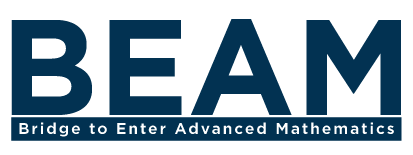














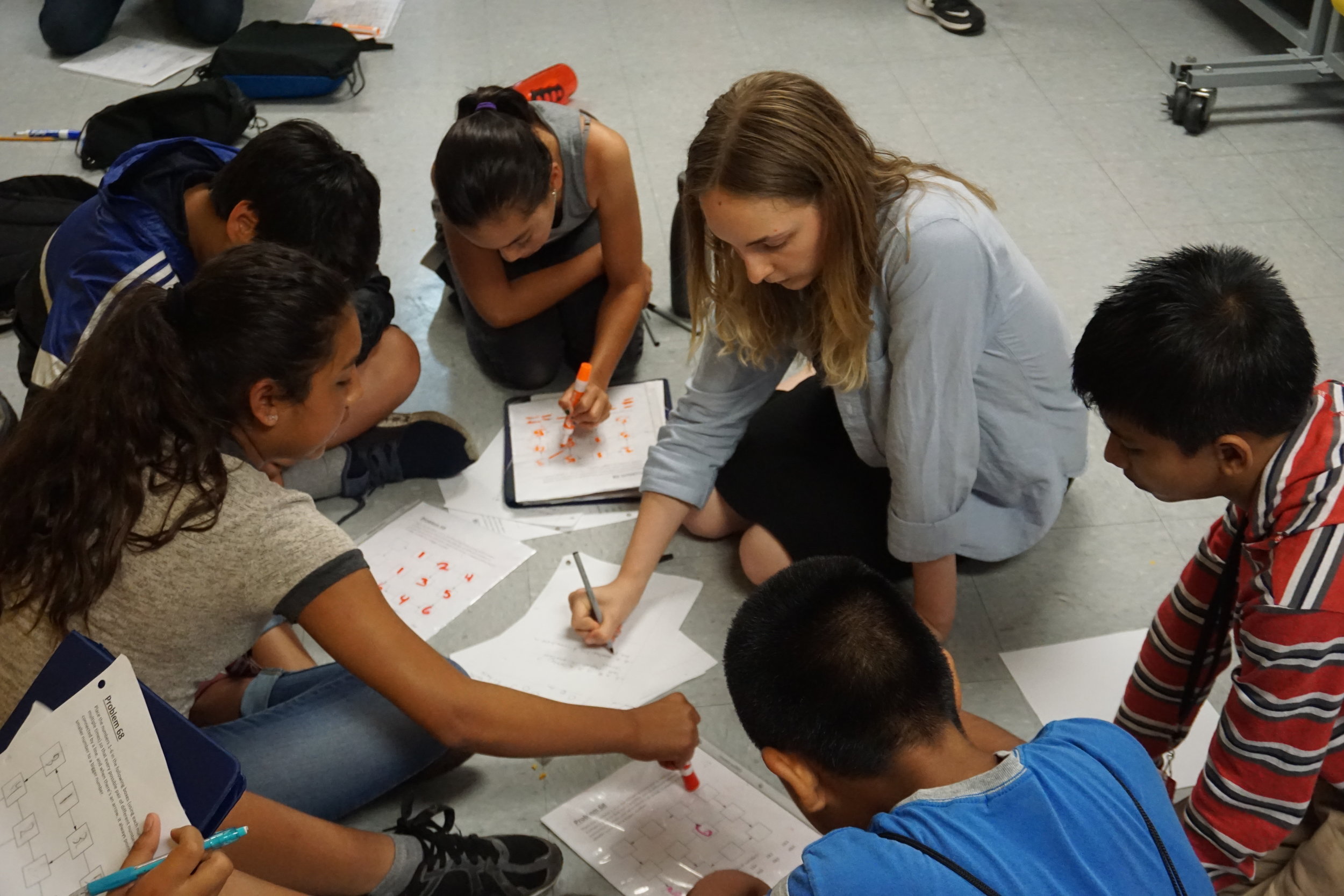










!["At first, I didn't felt [sic] like going to BEAM but then you supported me and I got accepted. Now I feel like BEAM is a family to me. Thank you."Daniel is a student at Young Oak Kim Academy.](https://images.squarespace-cdn.com/content/v1/561a6eede4b0448989c88951/1536615478385-EES7UQE1YXJJ7MF8UV5L/Daniel+P+Quote.jpg)


